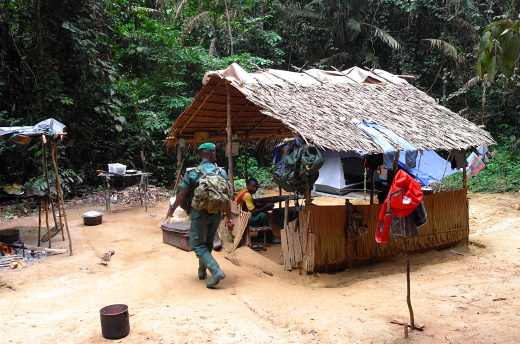Rangers´ tent
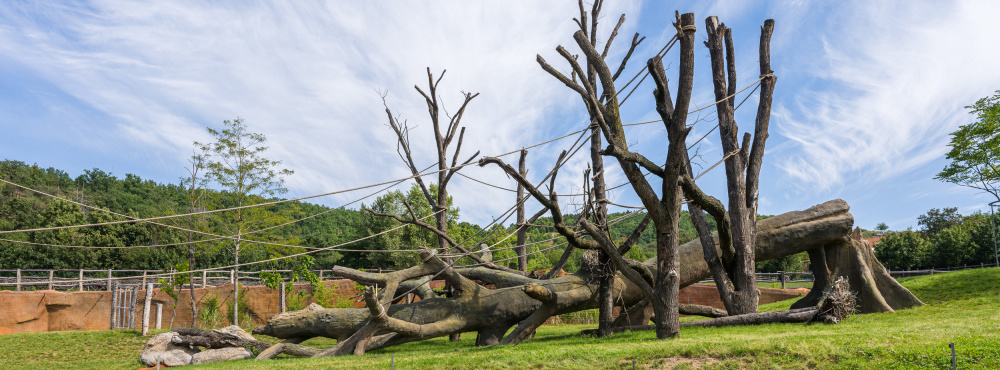
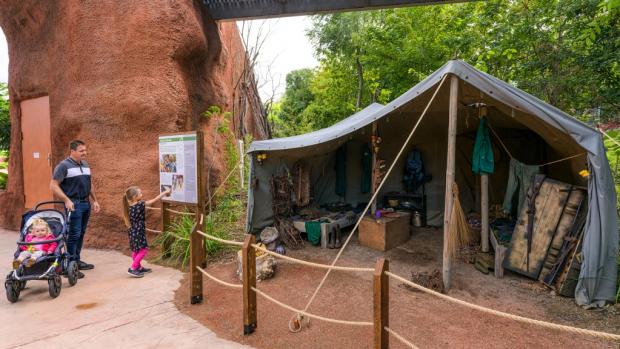 The rangers’ tent enhances the authentic atmosphere around the pavilion. It is filled with real items (once used by Cameroonian rangers) or their replicas. Photo: Petr Hamerník, Prague Zoo
The rangers’ tent enhances the authentic atmosphere around the pavilion. It is filled with real items (once used by Cameroonian rangers) or their replicas. Photo: Petr Hamerník, Prague Zoo
The tent, which forms part of the Dja Reserve exhibitions, represents a field base used by rangers in the eponymous area of Cameroon. Here you can see not only authentic artefacts (old rangers’ equipment and poachers’ snares), but also replicas of weapons confiscated from poachers and trophies from their illegal kills.
Rangers’ equipment
Dja Reserve rangers‘ camp. Photo: Miroslav Bobek, Prague Zoo
The core area of the Dja Biosphere Reserve—the Dja Faunal Reserve—covers approximately 526,000 hectares. Yet, this area, roughly the size of the Norfolk county in England and twice the size of the country of Luxembourg, is protected by fewer than 60 rangers (as of 2022). Meanwhile, countless poachers attempt to hunt in the reserve. Occasionally, the rangers mount multi-day missions deep into the forest to detect and dismantle gangs of poachers and bushmeat smugglers. They aim to approach poachers’ campsites unnoticed. In 2021 alone, they destroyed some 200 of these makeshift camps, which serve as forest bases for poaching gangs.
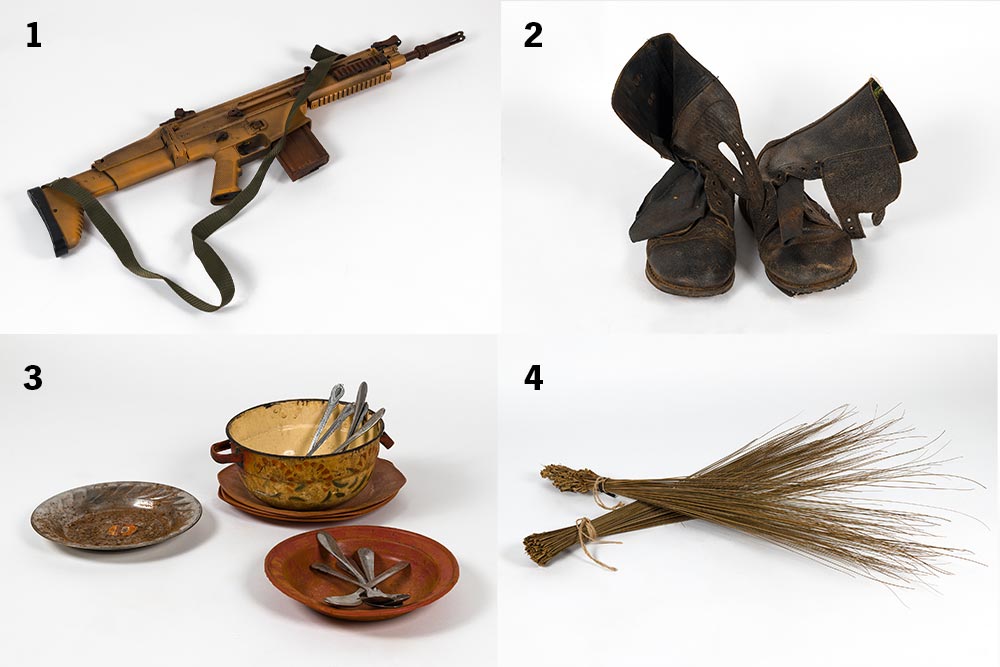
- A ranger’s rifle. Eco-guards are equipped with firearms so that they can confront heavily armed poaching gangs. One of their duties is to proactively hunt for poachers, which often requires several days trekking through the forest.
- Good-quality footwear is vital in such challenging terrain; damp conditions and long hikes through the forest take a serious toll on boots. As one ranger put it: “An eco-guard is only as strong as his boots.”
- Cooking utensils come in handy for multi-day stays in the forest.
- Brooms are practical for sweeping away leaves where you want to pitch a tent, keeping the camp tidy, or even brushing spiders and scorpions out of the tent.
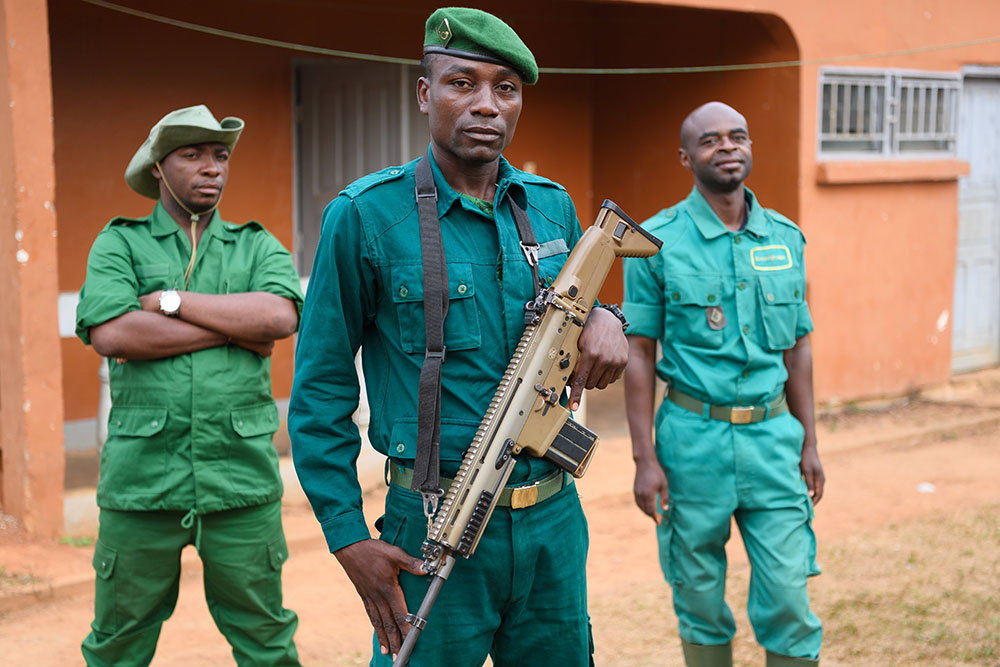
Besides their typical green uniforms, rangers also carry weapons—poaching gangs are often armed and prepared to shoot. Photo: Miroslav Bobek, Prague Zoo
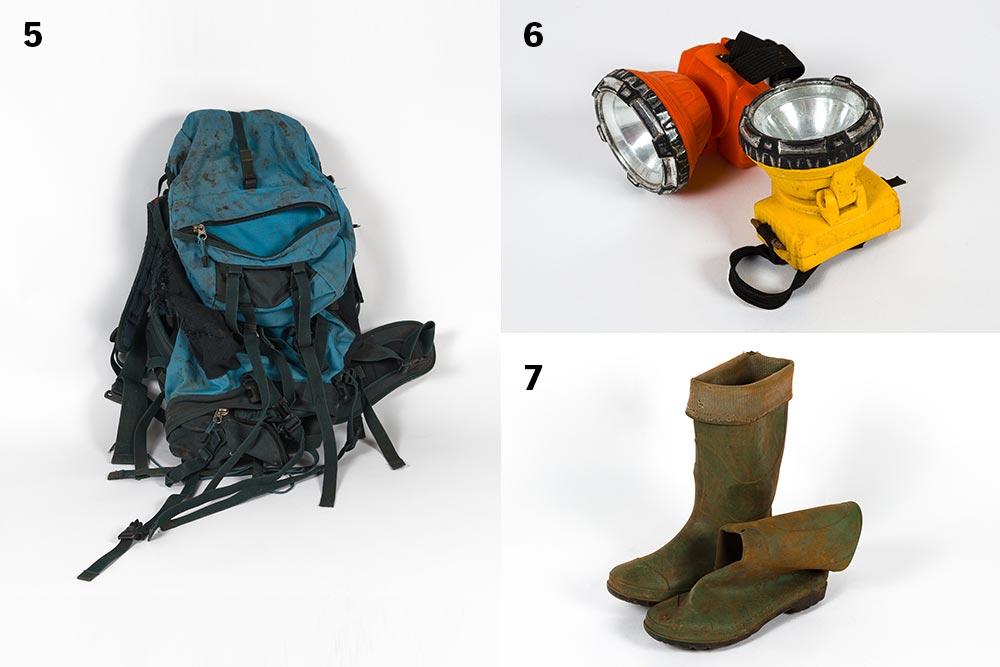
- A rucksack
- Torches and headlamps
- Wellington boots. These items were among the first pieces of support we provided to the rangers at the outset of our collaboration. Thanks to funds from our public collection account We Help Them to Survive, rangers were equipped with the essentials for working in these arduous conditions—not only the gear listed above, but also tents, raincoats, and satellite phones.
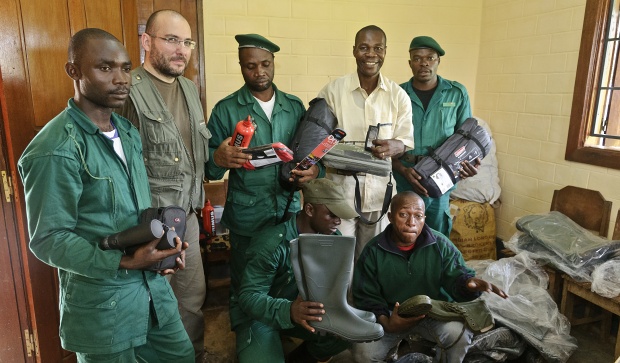
Prague Zoo director Miroslav Bobek handing over supplies to Dja Reserve rangers in 2011. Photo: Petr Slavík
Confiscated poachers’ equipment

- Rifles confiscated from poachers. Many are homemade. Owners hunt either for themselves or rent the rifle to hired poachers—often in exchange for a share of the catch.
- A hand-woven basket that can be carried like a backpack, used by poachers to transport medium-sized kills such as duikers. Species like blue duikers, brush-tailed porcupines, or cane rats may be hunted legally for personal consumption.
- A machete is an all-purpose tool for harvesting crops, cutting a path through the forest, and dispatching animals caught in traps.
- Wire snares are one of the most common poaching techniques. They trap small mammals, but chimpanzees and gorillas can also become entangled. In 2021 alone, rangers in the Dja Biosphere Reserve disabled nearly 2,000 snares.
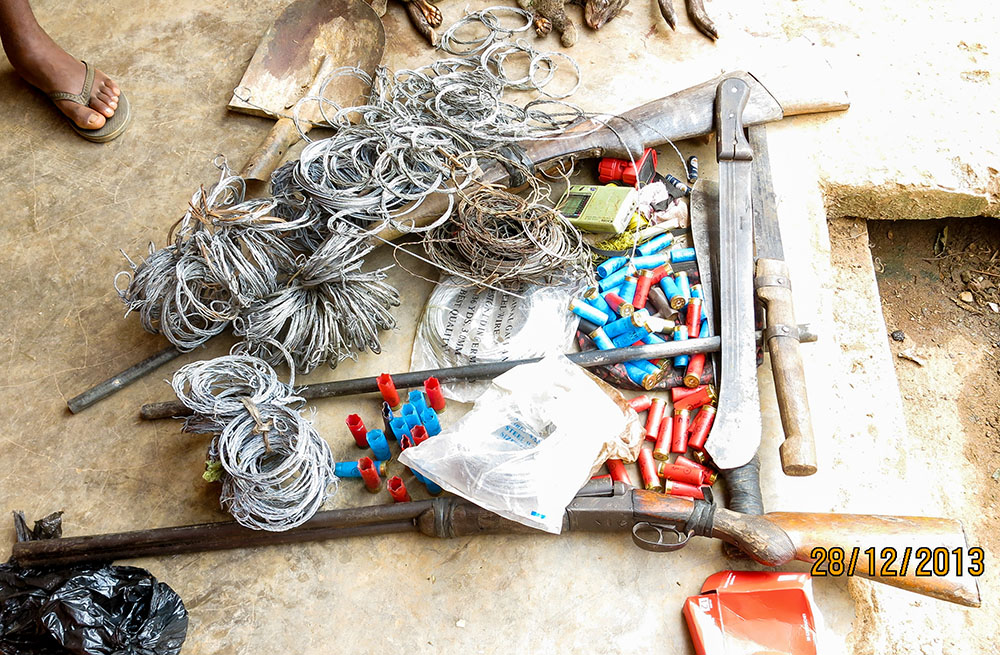
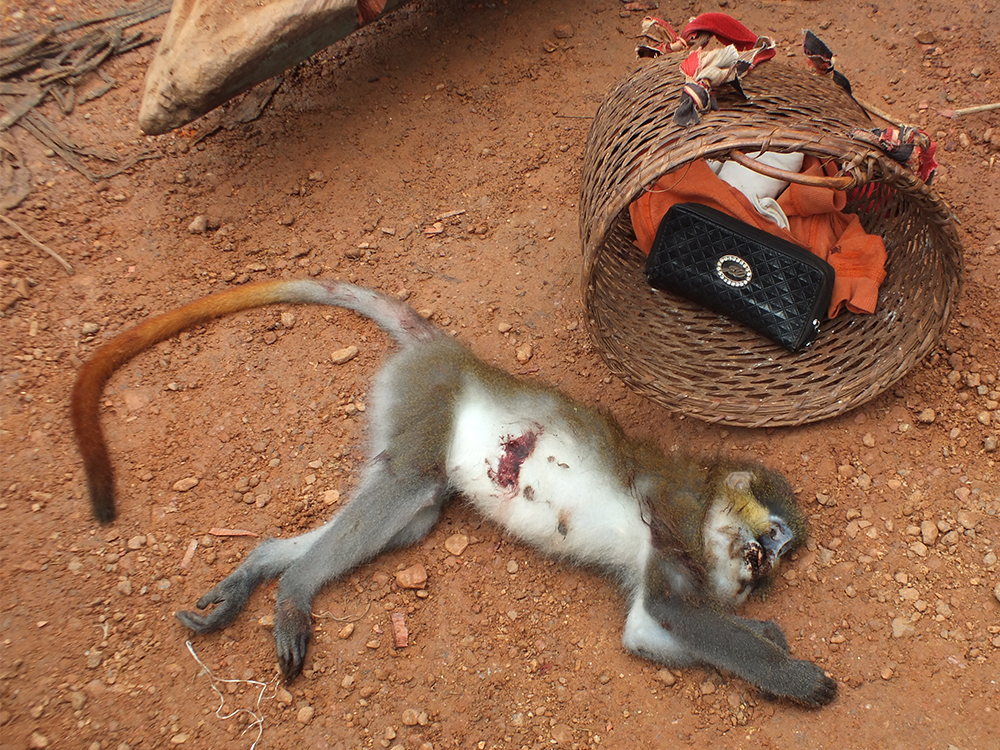
Left: Rangers must also look for signs of poaching, such as spent cartridges, and confiscate ammunition. Photo: Prague Zoo archive
Right: A basket containing a poached moustached guenon at the edge of the Dja Reserve. Photo: Daniel Frynta
Confiscated animal parts
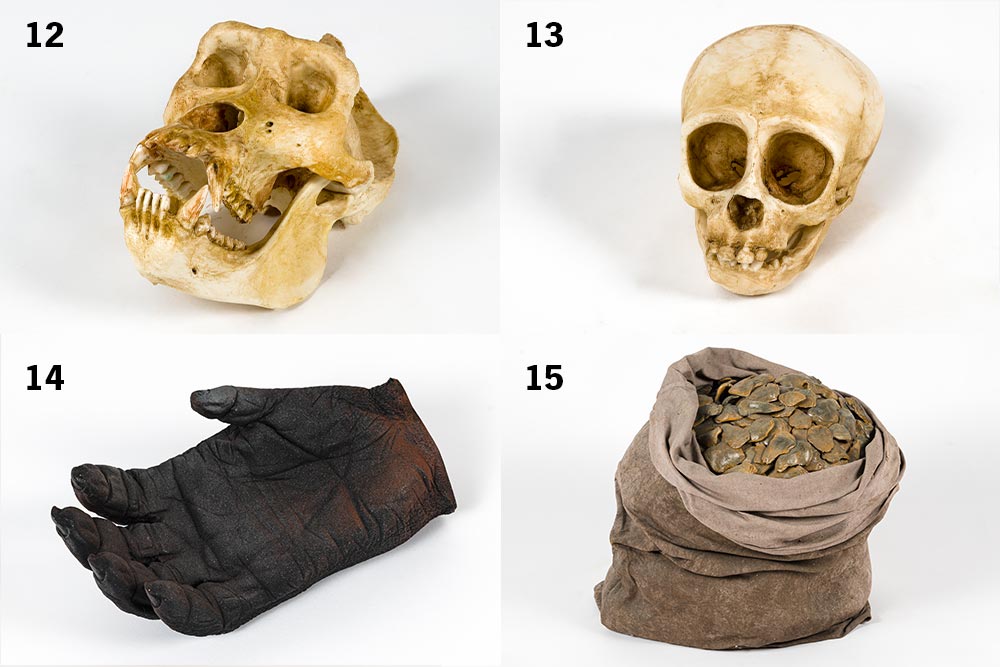
- Adult gorilla skull. Hunting for gorillas is illegal in Cameroon, yet they still fall victim to poachers—whether by chance (when they encounter an opportunistic hunter) or intentionally (by organised gangs).
- Gorilla infant skull
- Gorilla hand. Superstitions abound that gorilla body parts have magical properties, supposedly granting power and strength. A poacher might earn around 50,000 Central African Francs (the equivalent of about 1,800 CZK or 75 Euro) for a whole gorilla, while the dealers can get twice as much. That is roughly a third of the average monthly salary in Cameroon.
- A sack of pangolin scales. Since the turn of the millennium, pangolins have become probably the most trafficked mammals. In addition to being hunted for bushmeat, their scales are smuggled to Asia to meet demand for supposed traditional medicine.
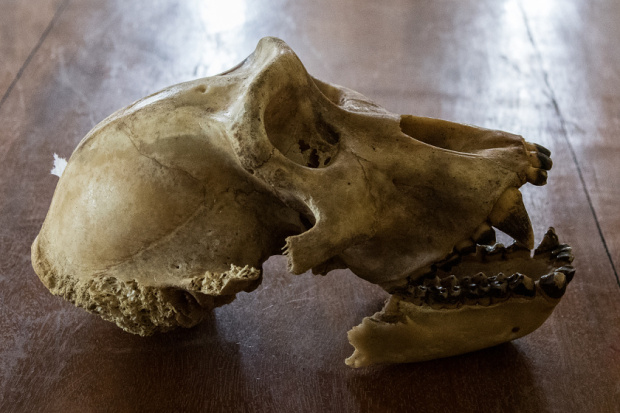
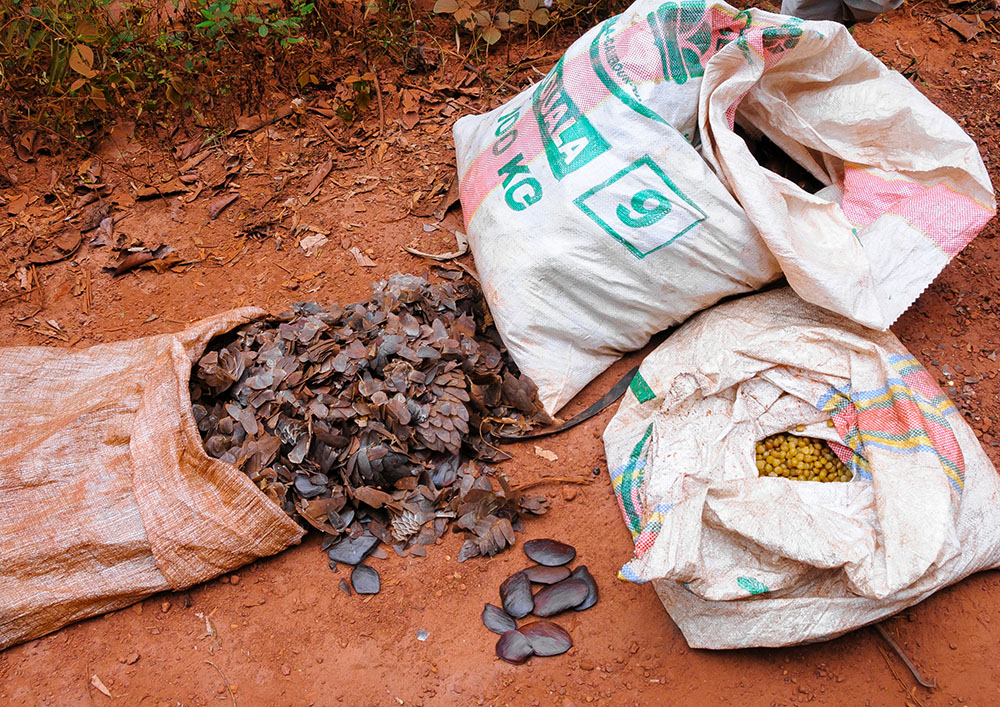
Left: Gorilla skull confiscated in Cameroon’s Campo Ma’an National Park. Photo: Vít Lukáš, Prague Zoo
Right: Seized sacks of pangolin scales. Photo: Hana Geroldová, Prague Zoo
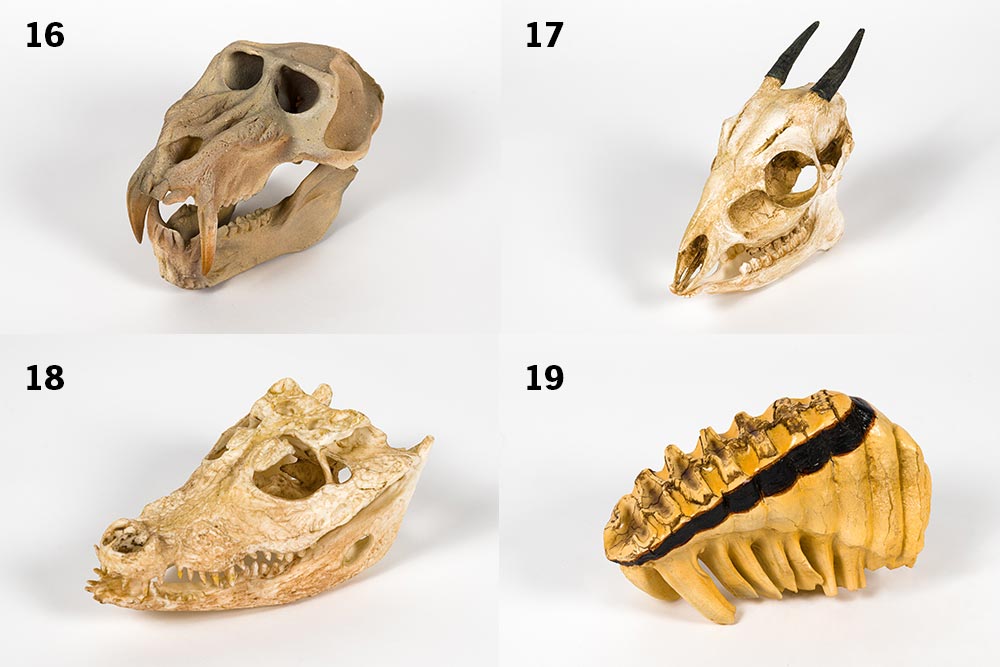
- Mandrill skull. Mandrills are rare in the Dja Reserve—often seen only as migratory individuals—yet their remains still appear in poachers’ camps.
- Duiker skull. Duikers are abundant and among the most commonly hunted animals. The large depressions in front of their eye sockets house distinctive scent glands for marking territory.
- Crocodile skull. Crocodiles—especially the African dwarf crocodile and the Osborn’s dwarf crocodile—are sometimes found in bushmeat markets, along with large Gaboon vipers.
- African forest elephant molar. A poached elephant can yield a lucrative haul, and not only because of its tusks. Almost every part of its body can be sold: hide, ears, tail, brain, even its dung.
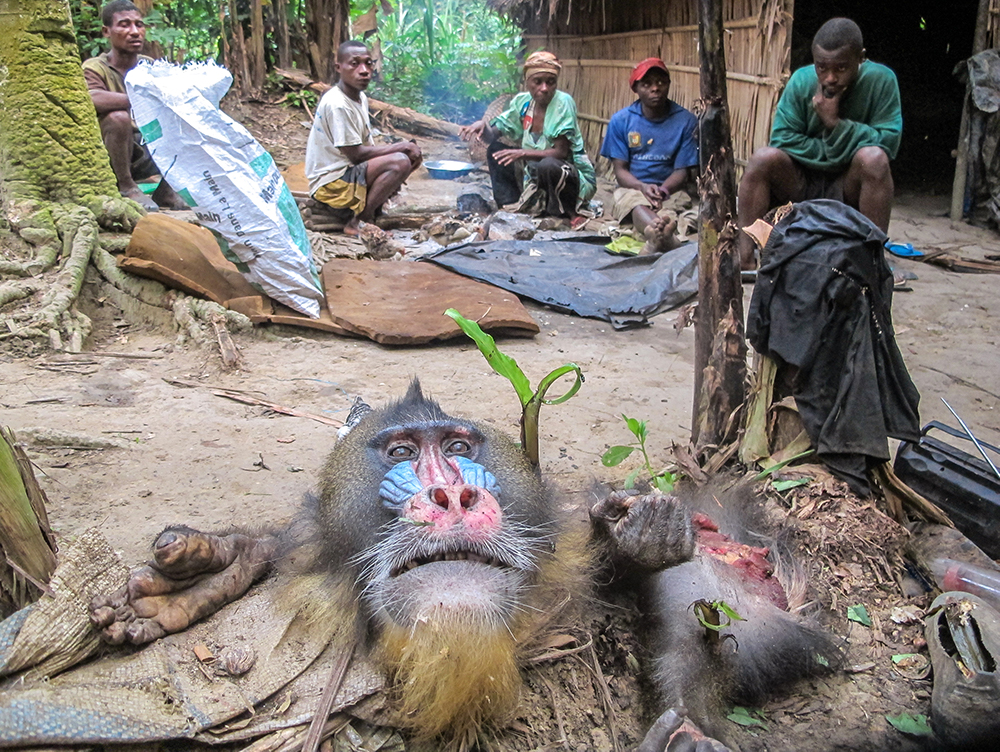
Poachers detained by reserve rangers at their camp in 2014. A butchered mandrill lies in the foreground. Photo: Prague Zoo archive
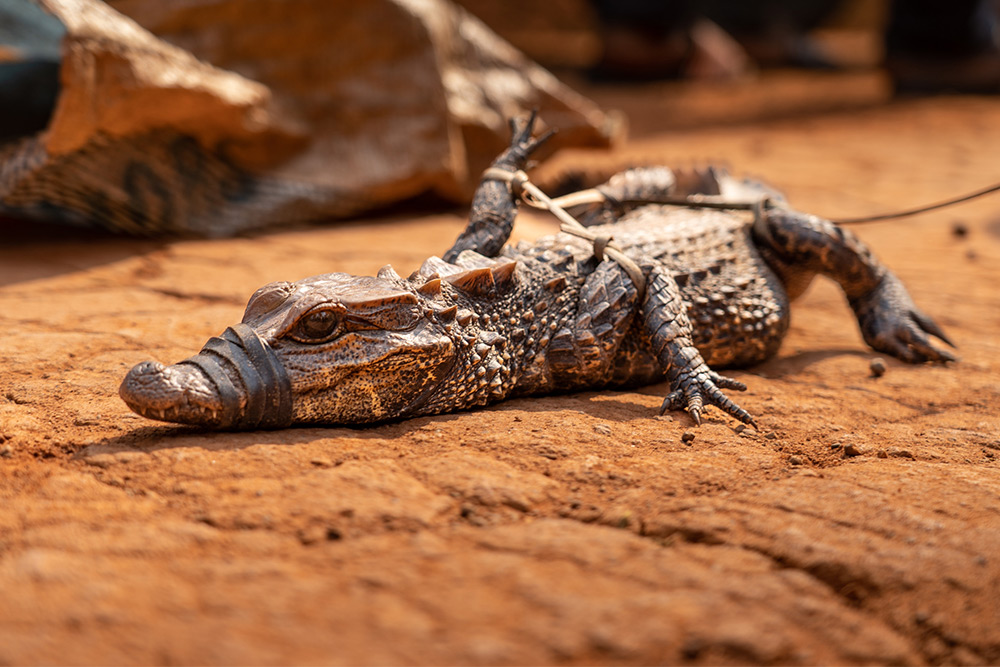
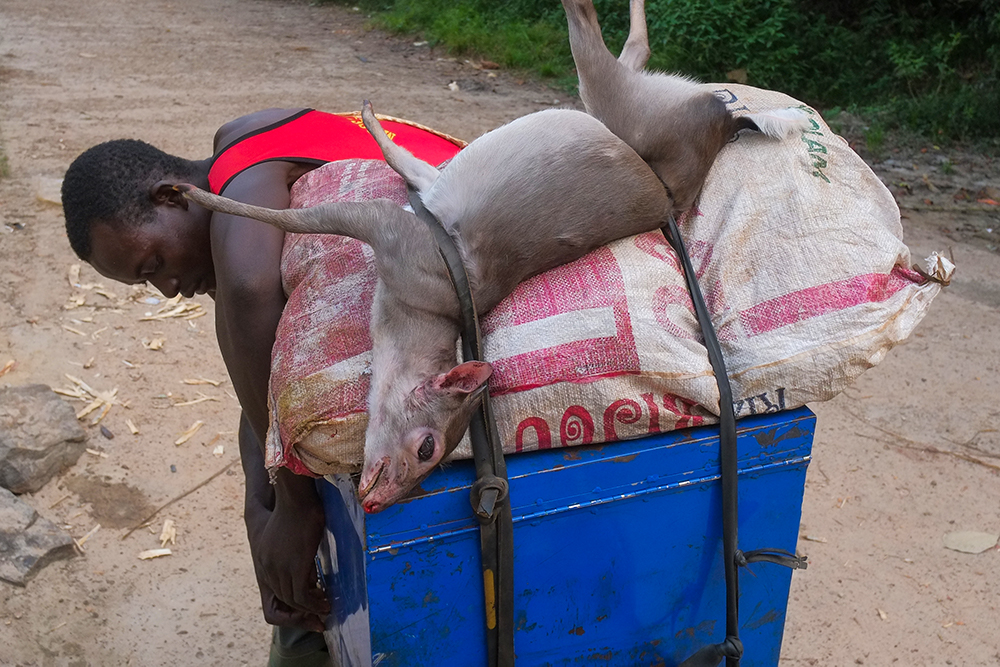
Left: A protected Osborn’s dwarf crocodile confiscated by rangers during a roadside check. Live animals are rarely rescued. Photo: Oliver Le Que, Prague Zoo
Right: Blue duikers (pictured) are plentiful and one of the most frequent kills. Photo: Daniel Berti
ZOOPRAHA.CZ
Contacts
- The Prague zoological garden
U Trojskeho zamku 120/3
171 00 Praha 7
Phone.: (+420) 296 112 230 (public relations department)
e-mail: zoopraha@zoopraha.cz
Others


